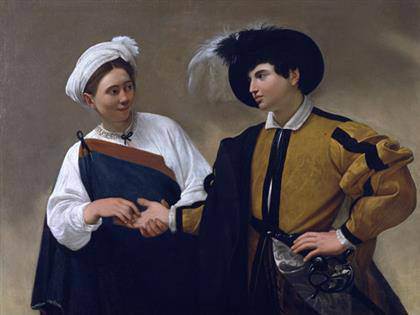
Buddha (detail).
Provenance unknown, central Thailand, first half of the 7th century.
Sandstone; H. 67 3/8 in. (171,2 cm.)
National Museum, Bangkok
Image from www.metmuseum.org
Hindu-Buddhist sculpture at the Metropolitan Museum ‘Lost Kingdoms: Hindu-Buddhist Sculpture of Early Southeast Asia, 5th to 8th Century’ explores the sculptural traditions of the Hindu and Buddhist kingdoms from the early 5th to the close of the 8th century. Metropolitan Museum, April 14–July 27, 2014.]]>
Source: The Metropolitan Museum of Art
Some 160 sculptures are featured, many of them large-scale stone sculptures, terracottas, and bronzes. They include a significant number of designated national treasures lent by the governments of Cambodia, Vietnam, Thailand, Malaysia, and Myanmar, as well as stellar loans from France, the United Kingdom, and the United States. Recent excavations and field research have made it possible to redefine the cultural parameters of early Southeast Asia, a region that created some of the most powerful and evocative sculpture of the Hindu-Buddhist world in the first millennium. The results are presented in both the exhibition and its accompanying catalogue.
“Lost Kingdoms” is organized thematically in seven sections representing the major narratives that have shaped the region’s distinct cultural identities. “Imports” features rare surviving examples of exotic objects from early India and further West that were discovered in Southeast Asia. “Nature Cults” presents objects demonstrating the persistence of nature-cults in Southeast Asia well into the Hindu-Buddhist period. “Arrival of Buddhism” explores the early expressions of the Buddhist faith in Southeast Asia. “Vishnu and his Avatars” illustrates the responsiveness of the region’s earliest-known rulers to Hinduism, as exemplified by their embracing of Vishnu as an ideal model of divine kingship. “Siva’s World” presents the cult of Siva and his family, including Parvati, Ganesha, and Skanda, and the cult of the Shiva-linga as divine protector. “State Art” explores Buddhist art as an expression of state identity. The final section, “Savior Cults”, is dedicated to the cult of the Bodhisattva, the Buddhist saviors and their dissemination throughout Southeast Asia.
Thomas P. Campbell, Director and CEO of the Metropolitan Museum, stated: “Exhibitions that provide this level of exposure to previously unfamiliar material of such significance come along very rarely. The majority of the important and breathtakingly beautiful works in ‘Lost Kingdoms’ have never before traveled outside their source countries. We are indebted to the generosity of all of the international lenders, including more than five countries in Southeast Asia and Europe. We are especially honored that the government of Myanmar has signed its first-ever international loan agreement in order to lend their national treasures to this exhibition.”
Related content
“Flowering of Edo Period Painting” – Metropolitan Museum (exhibition, 2014)
Follow us on:


